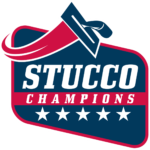Acrylic Stucco vs. Traditional Stucco: A Comprehensive Comparison
Understanding Acrylic and Traditional Stucco
Acrylic and traditional stucco are popular choices for exterior finishes, each with its unique properties and applications. This analysis aims to delve into their differences and help you make an informed decision for your building projects.
Acrylic Stucco: Often termed as synthetic stucco, elastomeric stucco, or under various branded names, acrylic stucco is a modern take on traditional stucco. Its composition includes acrylic resins and polymers, akin to a high-grade, sand-infused paint. This variant is known for its vibrant colors and texture versatility.
Traditional Stucco: Traditional stucco, also known as classic or hard coat stucco, comprises Portland cement, lime, sand, and water. Its appearance and texture are more natural, offering a timeless appeal. This type is celebrated for its cost-effectiveness and textural range.
Comparative Analysis of Properties
Form and Packaging:
- Acrylic: Sold in 5-gallon buckets, weighing 50-70 pounds, it’s a pre-mixed, wet solution available in various colors.
- Traditional: Available in 80-90 lb. dry bags resembling concrete mix, traditional stucco requires mixing before application.
Cost Analysis:
- Acrylic: Generally costlier, averaging $40-$50 per bucket, covering 100-250 sq. feet depending on texture.
- Traditional: More affordable, priced around $10-$15 per bag, covering 100-180 sq. Feet.
Texture and Color:
- Acrylic: Offers a wide range of textures and consistent, vibrant colors.
- Traditional: Provides limitless texture options, but with more subtle and less consistent coloring.
Application Process:
- Acrylic: Involves a primer coat followed by troweling or spraying the stucco. It’s user-friendly for DIY enthusiasts.
- Traditional: Requires pre-soaking walls, followed by a similar application process, but demands more skill and preparation.
Durability and Maintenance:
- Acrylic: Resistant to hairline cracks and water, it’s suitable for varied stucco systems. Its color longevity reduces the need for repainting.
- Traditional: Absorbs and expels water, requiring more maintenance. It can be painted after 30 days of application for a refreshed look.
Environmental and Practical Considerations
Considering the environmental impact, acrylic stucco might have a higher ecological footprint due to its synthetic composition. Traditional stucco, being more natural, could be seen as a greener choice. However, the durability and maintenance needs of each type also play a role in their overall environmental impact.
Real-World Examples and Case Studies
In a coastal home exposed to harsh weather, acrylic stucco’s water resistance and color retention proved advantageous. Conversely, a historic building restoration project favored traditional stucco for its natural look and compatibility with the original materials.
Expert Insights and References
This comparison draws upon industry standards and publications such as the American Society for Testing and Materials (ASTM) guidelines and the National Association of Home Builders (NAHB) resources, ensuring accuracy and credibility.
Conclusion
Both acrylic and traditional stucco have their unique advantages and challenges. Acrylic stucco is ideal for vibrant colors and flexibility, while traditional stucco is preferred for its natural look and cost-effectiveness. The choice depends on project requirements, environmental considerations, and aesthetic preferences. This comprehensive analysis provides valuable insights into stucco finishes, aiding in informed and sustainable choices for building projects.
Last week, we shared Navigating the Challenges of Painting Freshly Installed Stucco covering the key considerations, timing, and techniques for achieving a perfect paint job on new stucco. If you’re tackling a fresh stucco project, this guide is a must-read!
—
